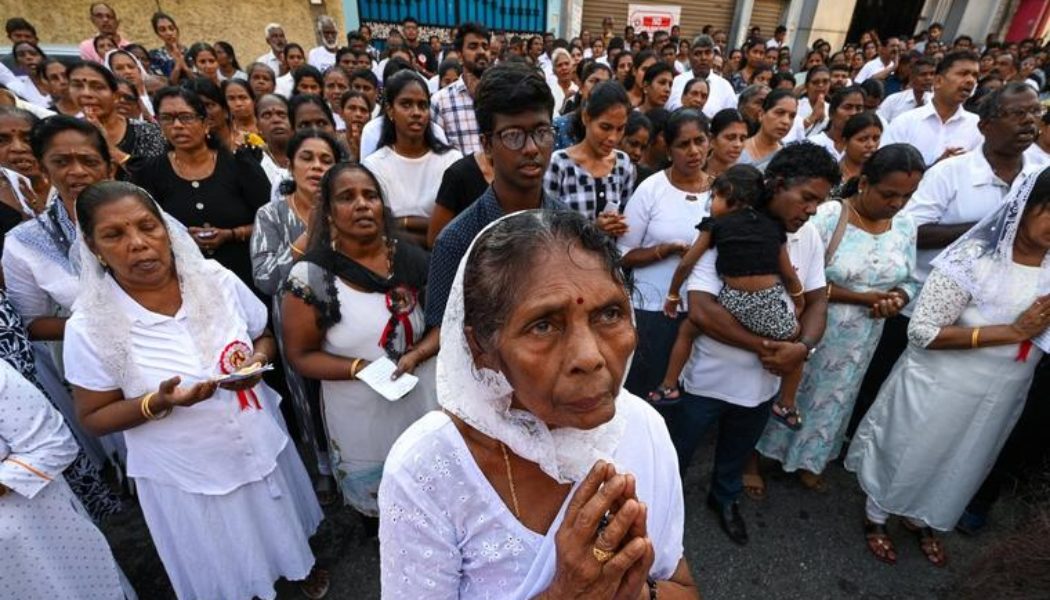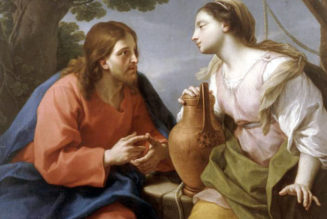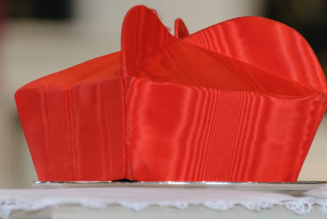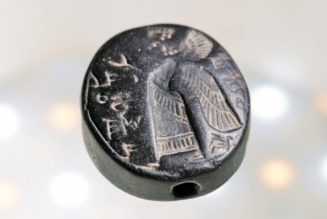
‘Christ became obedient to the point of death, even death on a cross. Because of this, God greatly exalted him and bestowed on him the name which is above every other name.’ (Philippians 2:8-9)
The Liturgy of the Lord’s Passion in some respects looks like a traditional Mass with a rite (the veneration of the cross) added. It is not.
First of all, it is not a Mass because no consecration of the Holy Eucharist takes place within it. In keeping with ancient tradition, Good Friday is the one day of the year the Church does not celebrate Mass. The Eucharist distributed at Communion on Good Friday has been previously consecrated and reserved last night — Holy Thursday evening — at the altar of repose.
In comparing the appearance of the liturgy of Good Friday with the Mass, we can note:
- there is a very different (and abbreviated) entrance rite;
- the Liturgy of the Word has attached to it something like the Prayer of the Faithful (the prayers we make for various intentions after the Creed), although far more structured;
- there is a unique rite, the veneration of the cross;
- there is no Liturgy of the Eucharist, only a Communion Rite; and
- there is a short blessing but, again, no dismissal.
Let’s understand each element.
The Entrance
In comparison to the usual Sunday Mass, the solemnity of Good Friday is underscored by silence. The priest and any ministers enter in silence. They do not merely genuflect — they kneel. Indeed, once everyone is kneeling, the priests prostrate themselves, the only time in the regularly scheduled liturgy that this happens. (Candidates for Holy Orders prostrate themselves before ordination, but that is not a scheduled recurring liturgy.) This kneeling-prostration should take some time: we recognize our complicity in today’s events. Once the priest rises, he proceeds to the chair where he prays the Collect (Opening Prayer).
The Liturgy of the Word
As on Sundays, the Liturgy of the Word has three readings. The first, from Isaiah, is from the prophet’s “Suffering Servant Songs,” that mysterious vision of a suffering Savior by whose death redemption is accomplished, a prophecy fulfilled in what Christ did on Good Friday. The second, from Hebrews, underscores Jesus’ sacrificial death on the cross where he is both priest and lamb of sacrifice. The Gospel is always the Passion according to St. John divided, as on Palm Sunday, into a dialogue format involving speakers for Christ, specific remarks by particular figures, a narrator and the crowd (us). A homily should follow.
What is unique to Good Friday is its “Prayers of the Faithful.” The Sunday Prayers of the Faithful are usually extemporaneous, either canned (provided by some publisher) or written locally, and usually brief. The Sunday Prayers of the Faithful should include intentions for the needs of the Church and world, including prayers for the sick, dying, and dead. They often include personal intentions.
The Prayers of the Faithful on Good Friday are much more structured and have prescribed content. That’s because they are ancient prayers, intentions the Church recalls every Good Friday. Their structure is different, too: the faithful are invited individually first to pray for each stated intention, then asked to kneel to pray silently for that intention by themselves, and finally to join in a common prayer for that intention offered by the celebrant.
The 10 intentions have a logic that progressively expands outward, starting from the Church that Christ died to establish. Yes, Christ died to save us but, as Vatican II reminds us, God saves us not as isolated individuals but as members of his Body, the Church (see Lumen gentium, No. 9). In the Preface for the Mass of the Sacred Heart, the priest reminds us that from Christ’s crucified side flowed water and blood, “the fountain of sacramental life (Baptism and the Eucharist) in the Church.” So, likewise, in our Good Friday intentions, we start from the Body of Christ that is the Church and move progressively outward: for the Pope; for the clergy and laity; for those preparing for baptism (especially tomorrow, catechumens), and finally for “the unity of Christians” because, no matter what doctrinal or moral issues may divide us (and that is in no way to downplay their seriousness), we have a basic bond that comes from being validly baptized, from bearing the dignity of “Christian.”
Next, the Prayers of the Faithful move progressively beyond the visible Church to the whole of humanity, starting with “the Jewish People,” since they were the first with whom God made a covenant; then to “those who do not believe in Christ,” i.e., people who acknowledge “God” in some sense without professing Christ, such as Muslims or various Eastern religions. Now follows prayer for “those who do not believe in God,” recognizing that all human beings acknowledge some absolute (however inchoate) to which they commit themselves above all else and praying they recognize in that the seeds of faith. Having prayed for all humanity in its various degrees of understanding of God, we conclude by praying for civil authorities (given their direct impact on people’s lives) and then “for all in need,” which is all of us.
As on Sunday, the end of the Prayers of the Faithful is the end of the Liturgy of the Word.
The Veneration of the Cross
Unique to the Good Friday liturgy is the rite of the veneration of the cross. The cross is the central feature of today’s observance, and so it is a central element in today’s liturgy. Veneration of the cross may go all the way back to fourth-century Jerusalem. The priest enters in procession through the church with a veiled wooden cross, which he progressively uncovers as he advances toward the altar. Once there, the cross is placed in a place of honor where the celebrants and then each of the faithful is invited to honor it, usually by kissing it. There is one Lord, one Savior, and so there should be one cross — today is not a day to rush.
The Communion Rite
Communion follows the veneration of the cross. Because this service is not a Mass, there has been no offertory, Eucharistic Prayer, or consecration. Communion is provided from the hosts that had been consecrated and reserved yesterday. But the sacred species are absent from today’s bare and stripped church. The Communion Rite begins with preparation of the altar (laying down altar cloths and candles) and the solemn but simple bringing of the Blessed Sacrament from its place of reserve to the altar. The priest’s spoken prayers begin at the modified Communion Rite (recitation of the Our Father but omitting the Rite of Peace, then presentation of the Blessed Sacrament with the invitation, “Behold, the Lamb of God …” Communion follows in the ordinary manner. Afterward, the Blessed Sacrament is once again stored in ciboria and reserved. The Communion Rite concludes with the Postcommunion Prayer.
Short Blessing
Again, there is no dismissal. The one Paschal Triduum is underway … and continues. The priest simply prays an invocation, asking God to bless those who have assembled “devoutly” to recall Jesus’ Passion. Then, as silently as they entered, the celebrant and ministers leave the altar.
The Liturgy of the Lord’s Passion traditionally was timed to coincide with the hour of the Lord’s death, i.e., 3 p.m. Increasing numbers of parishes in the United States have pushed that liturgy into later in the day, primarily because encroaching secularization has largely made Eastertime invisible in the United States. Since Easter always falls on a Sunday, it safely evades the question of a “holiday,” while the number of states that still treat Good Friday as a holiday are decreasing.
Churches should be open in the hours after the Good Friday liturgy into the evening, at least for private prayer. Many parishes celebrate the Stations of the Cross that evening. Some even provide an opportunity for confessions. In Polish parishes, the traditional “Bitter Lamentations” devotion (Gorzkie żale) is also appropriate. The Church’s general liturgical law allows for Confessions.









